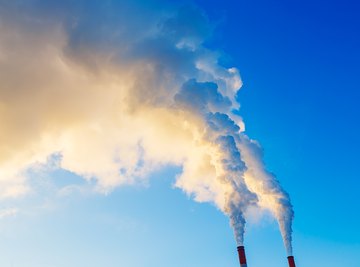
Carbon dioxide, also known as CO2, exists in the atmosphere at a concentration of 0.033 percent. The chemical reactions that produce CO2 include animal respiration and the combustion of hydrocarbons. Carbon dioxide does not normally exhibit a liquid state; it converts directly from solid form to gas in a process scientists call “sublimation.”
Density
Density represents the numerical ratio between a substance’s mass and the volume of space it occupies. Scientists normally express density in units of grams per milliliter (g/mL) or grams per cubic centimeter (g/cc).
Gaseous CO2
Under “standard” conditions of 0 degrees Celsius and 1 atmosphere of pressure, carbon dioxide exhibits a density of 0.001977 g/mL. This value is slightly greater than that of air -- 0.001239 g/mL -- under the same conditions.
Solid CO2
The solid state of CO2, commonly called “dry ice,” exhibits a density of 1.56 g/mL under standard conditions. For the sake of comparison, liquid water’s density is about 1.00 g/mL, which indicates that dry ice will sink when placed in water.
